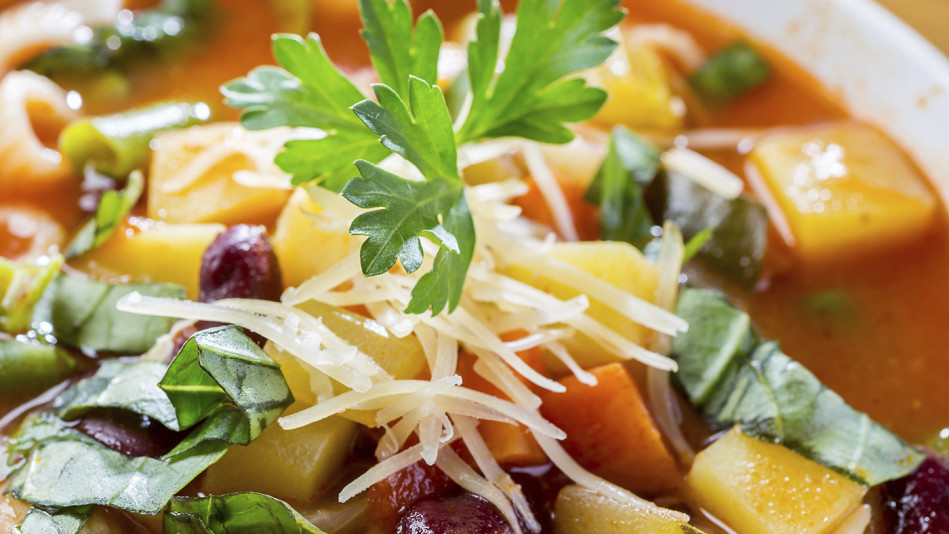1. Egg, tuna or chicken salads

We were surprised to learn that homemade egg, tuna or chicken salad can last up to seven days in the refrigerator. Just remember that your fridge should be set to 40 degrees or colder, says Jen Tong, global managing director of integrity and process excellence for a division of the public health and safety organization NSF International.
One more thing: Take extra precaution by beginning with ingredients that have been chilled (at 40 degrees or below) ahead of time, including even a brand new jar of mayo and a can of tuna. Tong says that's because mixing ingredients together can affect bacterial growth.
2. Cooked meats
Poached chicken, grilled steak and roast pork tenderloin all keep well for three to four days in the fridge, says Tong. She recommends putting the items in the refrigerator within two hours, since the less time the food spends at room temperature, the better (and safer).
One more thing: While storing in the freezer is another option, cooked meats tend to lose some of their flavor and texture in supercold temps.
3. Pizza

Just as with cooked meats, pizza is usually good for three or four days in the refrigerator. (Wrap it tightly to keep it tasting fresh.)
One more thing: If the pizza sat out for a few hours before being refrigerated, Tong says you're safest reheating it before eating. The skillet method is the most effective way we've seen to revive a soggy bottom, giving you a moist crust and making the cheese melt.
4.Soups and chilies

Whether you've made a pot of minestrone, chicken noodle or chili, when it comes to soups and chilies, there are almost always leftovers (and often, the meals taste even better after a day). You can keep enjoying them for three to four days once refrigerated, says Tong. The important thing is to get the temperature down quickly to keep the food in a safe temperature zone (below 40 degrees, or above 140).
One more thing: To speed the cool-down process, try separating large quantities into smaller containers. They can go directly into the fridge at that point; just leave the leftovers partially uncovered while they cool, then cover them completely once they reach fridge temperature.
5. Everything -- and we mean everything -- else

While three to four days is a good rule of thumb for most leftovers, there are exceptions (for instance, leftover raw shellfish, such as ceviche or sushi, has a lifespan of just one to two days). For an easy way to determine whether to toss something, there are a number of free apps that can help; one is Is My Food Safe? (a collaboration between the Academy of Nutrition and Dietetics and ConAgra Foods), where you can scroll through by category, say, desserts, and go from cakes to puddings. Another is USDA's new FoodKeeper app; among other features, it lets you enter the date you made something and then receive notifications when the food is nearing the end of its recommended storage time.
Latest Stories
-
Gold Fields Ghana Foundation challenges graduates to maximize benefits of community apprenticeship programme
57 mins -
GBC accuses Deputy Information Minister Sylvester Tetteh of demolishing its bungalow illegally
1 hour -
Boost for education as government commissions 80 projects
1 hour -
NAPO commissions library to honour Atta-Mills’ memory
2 hours -
OmniBSIC Bank champions health and wellness with thriving community walk
2 hours -
Kora Wearables unveils Neo: The Ultimate Smartwatch for Ghana’s tech-savvy and health-conscious users
2 hours -
NDC supports Dampare’s ‘no guns at polling stations’ directive
2 hours -
Police officer interdicted after video of assault goes viral
2 hours -
KNUST’s Prof. Reginald Annan named first African recipient of World Cancer Research Fund
2 hours -
George Twum-Barimah-Adu pledges inclusive cabinet with Minority and Majority leaders
3 hours -
Labourer jailed 5 years for inflicting cutlass wounds on businessman
3 hours -
Parliament urged to fast-track passage of Road Traffic Amendment Bill
3 hours -
Mr Daniel Kofi Asante aka Electrician
3 hours -
Minerals Commission, Solidaridad unveils forum to tackle child labour in mining sector
3 hours -
Election 2024: Engagement with security services productive – NDC
3 hours

